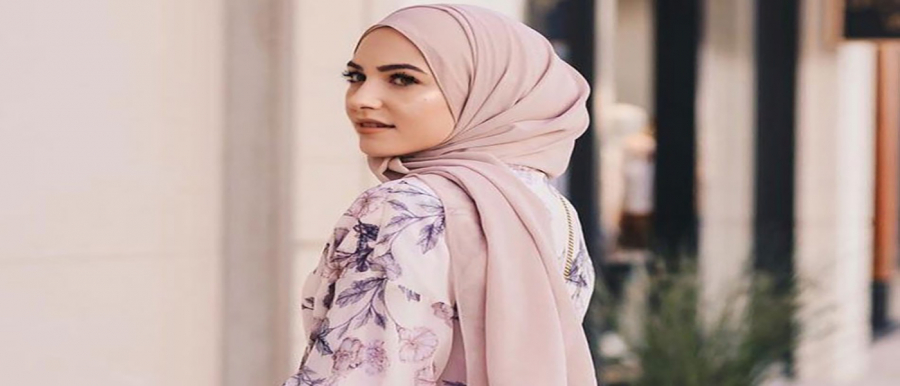Finding appropriate clothes can be one of the challenging issues of Muslim women. Living in modern societies necessitates its own lifestyle, including dress code and style, which is different in the four corners of the world. If a woman decides to choose Islam as her faith, what shall she wear?
Once, Imam Sadiq (AS) was wearing a nice expensive suit. A man called Sufiyan Souri saw him in The Holy Mosque and said: “O The son of Allah’s Prophet, I swear to Him that Neither Prophet Muhammad (PBUH&HP), nor Imam Ali (AS) and none of your forefathers wore such an expensive suit!”
He answered: “They were living at a time when most of the people were poor and in need. But today is different. Most people are living a good wealthy, abundant life. This is the time when the good servants of Allah are the most deserving to take advantage of Allah’s blessings.”
Then he recited this verse of the Holy Quran:
Say," Who has forbidden the adornment of Allah which He has brought forth for His servants, and the good things of [His] provision?" Say," These are for the faithful in the life of this world, and exclusively for them on the Day of Resurrection." Thus do We elaborate on the signs for people who have knowledge. Quran (7: 32) [1]
Islam does not forbid us from wearing clothes in line with the society, geographical location, culture, and tradition of the age and country we are living in, but it has some considerations. First, we need to discuss them in general and then refer to the issue of Muslim women.

.
1. Muslim Women Should Avoid The Peacock Effect!
Standing out and attracting the attention of the people around may cause disrespect and disregard for a Muslim woman or man. Peacocking undignifies the human soul and rather values the physical attractions of the human body. A believing Muslim considers everyone, and never pretends to be rich or poor with the dress he/she wears. Muslim women are special in that field, meaning that Islam insists on their dressing in a particular way. They are believed to be worthy of their soul, their femininity, and above all, for their humanity, not their sexual attractions, which can be a cause of abuse or disrespect in society.
Peacocking is not just a matter of wearing cheap and worn-out clothes or expensive luxurious suits, but it consists of any clothing which attracts irregular attention either with its color, thickness, texture, smell, or even its design.
Imagine that you have attended a funeral in India. White is the color of mourning, and red is the color of feasts and marriage. At that funeral, you encounter a person wearing a red dress, with lots of jewelry and extravagant style. Everyone looks cross at that person. That will be a sign of disrespect for the mourners and might even cause insult and struggle in the middle of the ceremony. And this is against the Islamic culture which is against disrespect and anything counter social.
2. Men Are Men and Women Are Women.
Genders are different from one another, and a healthy society needs them both, each with their definitive characteristics. So, women should look feminine, and men need to take what is masculine. However, there are clothes which both genders wear; like blouses, suits, and trousers, and nothing is wrong with those. But coloring nails or wearing makeup is pretty strange and unusual on a man, and Islam forbids that kind of peculiar look.
3. Look Like a Muslim Woman, not an Unbeliever!
Wearing clothes that belong to unbelievers makes Muslims look like them; as if they are following their beliefs, commands, etc. For instance, we all know that rotated star in a circle is a sign of Satanism. They are examples of clothes that a believing Muslim is to avoid. Any sign, style, or design which might relate to the unbelieving system of thought makes that person seem to believe or appreciate that system of thinking, be it willingly or unwillingly. Here it necessitates Muslims to think and analyze the clothes they choose to wear.

4. Wear Neat, Pure, and Halal!
The clothes that a Muslim wears must be Halal; meaning that it mustn’t belong to someone else who does not want that person to wear what belongs to him/her. The clothes of a Muslim are pure because they tidy up any sign of untidiness from that. It is neat and clean, the habit which is very much praised in Islam.
Imam Sadiq (AS) says: “wear clothes and adorn yourself. Truly, Allah is beautiful, and He likes beauty, but that has to be Halal.”
He also says: “Allah likes beauty and adornment, and dislikes looking disheveled” [2]
Modern fashion is becoming more and more complicated these days. The coming of new casual or formal styles might put Muslim women in dilemmas. In this case and similar occasions, they just need to remember the considerations above, besides Hijab, which is discussed in our article Hijab in Islam. Tips on the infographic of How to wear Hijab in Islam might be helpful, too.
At last, we need to remember that Islam never forbids anyone from being a person for the age he/she is living in. It just asks everyone to observe the rules of Islam and respect the community and society they are living in.
References:
[1] Bihar al-Anvar, Vol. 40, p 336, Hadith 18
[2] Sheikh Tousi, Amaali, Vol.1, p. 275


















